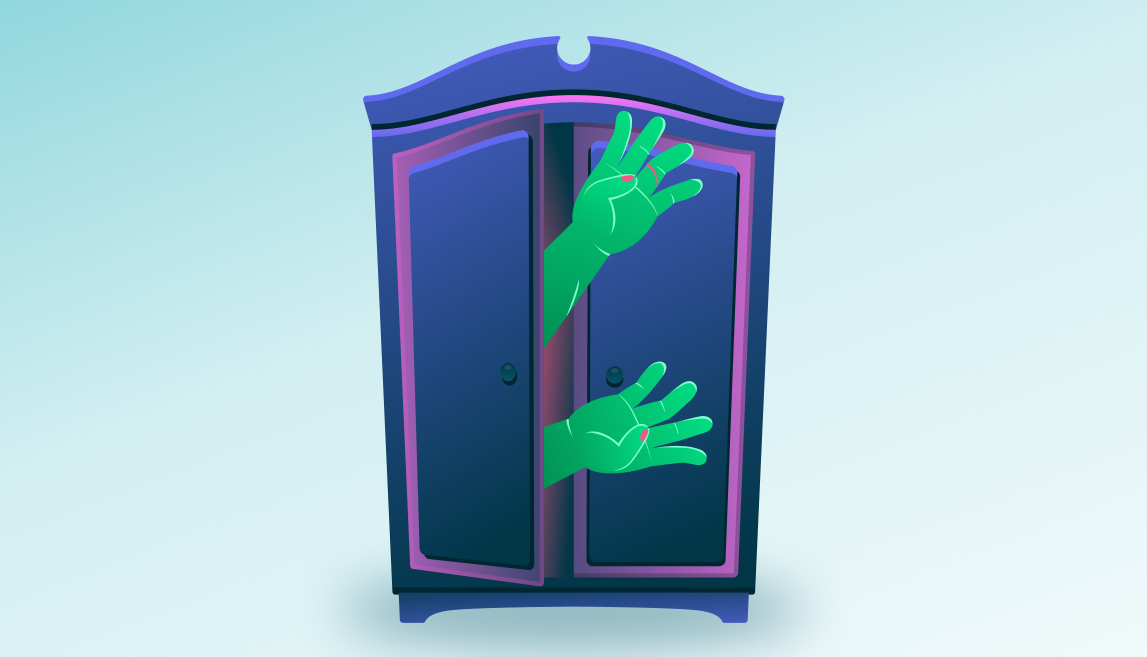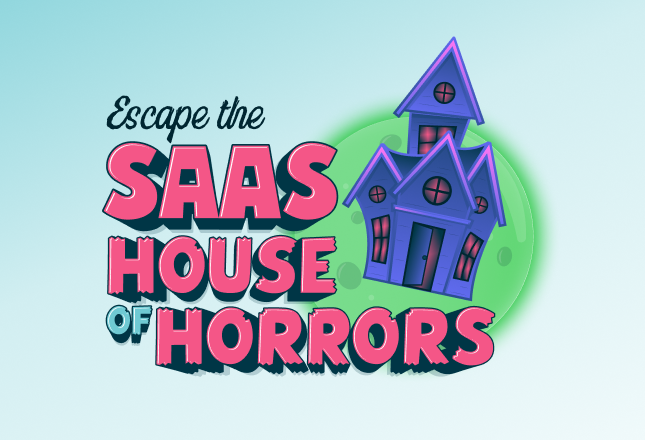This Halloween, your biggest scares aren’t coming from haunted houses or horror movies. They live in your SaaS environment, hiding behind trusted platforms, disguised as helpful integrations, and lurking in forgotten corners of your stack. But fear not. We’re here to take you on a terrifying tour of today’s top SaaS security threats… and how to stop them before they turn your business into a real horror story.
The Crawlspace of Shadow SaaS
Every haunted house has a dark, forgotten space where no one dares to look. In SaaS, that’s shadow IT. Employees sign up for new tools, connect them with OAuth, and share sensitive data across platforms without IT’s knowledge. These unmonitored apps can harbor weak security practices, lack enterprise controls, and expand your attack surface overnight.
What to do: Use SaaS discovery to shine a light into every corner. Identify unsanctioned apps, understand who is using them and what data they can access, then work with business units to bring them under governance or shut them down.

The Mirror Maze of Misconfigurations
You think everything is secure until you look a little closer. Misconfigured sharing settings, overly permissive roles, and stale admin accounts hide in plain sight. The scariest part? These are risks you created yourself. Misconfigurations remain one of the leading causes of SaaS data exposure. Whether it’s a document shared with “anyone with the link” or a dormant super-admin account, small oversights can spiral into breaches.
What to do: Continuously assess your security posture across all apps. Use automated policies to detect and fix risky configurations, enforce least privilege, and clean up accounts that should have been offboarded long ago.

Spiderwebs of SaaS-to-SaaS Integrations
Step into the attic and you’ll find intricate cobwebs of forgotten integrations and silent service accounts. These non‑human identities drive automation and productivity, but they’re often unmonitored and over‑permissioned, and attackers know it. For example, in the 2025 Salesforce/Drift incident, a compromised GitHub account allowed attackers to harvest OAuth tokens tied to integrations with Salesforce and export data long after the initial access. Once those tokens were in play, attackers didn’t need to bypass the perimeter, they simply used trusted connections to roam.
What to do: Inventory every SaaS‑to‑SaaS integration. Track which apps are connected, what scopes they’ve been granted, and whether they remain active. Remove anything you don’t trust or need. Enforce regular reviews and restrict scopes to only what is necessary.

The Masquerade of Mismanaged Identities
The guests have arrived. But do you know who they really are? Mismanaged SaaS identities let threat actors slip through your front door. Without strong identity lifecycle controls, orphaned accounts linger after employees leave, service accounts multiply, and MFA or SSO gaps widen. The result? Attackers walk in unnoticed.
What to do: Strengthen your identity controls. Enforce MFA and SSO across all apps. Track human and non-human identities alike, and ensure each account is owned, reviewed, and removed when no longer needed.

The Graveyard of External Data Shares
Out in the graveyard lie old links, forgotten documents, and exposed data waiting to be unearthed. Files shared with personal email addresses. Open links indexed by search engines. Customer information one click away from the wrong hands. These aren’t theoretical risks. High-profile breaches have stemmed from nothing more than an open Google Drive folder or a misconfigured SharePoint site.
What to do: Monitor external sharing across your SaaS apps. Set expiration dates on file links, restrict sharing to corporate domains, and alert on any sensitive data being exposed. The dead don’t stay buried forever — clean up before someone digs too deep.

Survive the Night (and beyond) with Valence
You don’t need garlic or silver bullets to fight back. Here’s a Quick Survival Checklist to help you stay one step ahead of the spookiest SaaS security risks hiding in your environment:
Quick Survival Checklist:
- Discover: Run a full SaaS inventory, including unsanctioned and Shadow apps.
- Fix Misconfigurations: Continuously detect risky settings and enforce hardened configurations.
- Govern Integrations: Audit and control all SaaS-to-SaaS connections and service accounts.
- Secure Identites: Enforce SSO and MFA, eliminate dormant accounts, review privileges.
- Protect Shared Data: Detect and clean up risky external shares, set expiration and access rules.
- Remediate Risk: Use automated workflows to remediate issues and close exposure windows.
Don’t Let Your SaaS Security Turn Into a Horror Show! 🎃
This Halloween, take control of your SaaS environment and turn off the fright. Let Valence help you find and fix SaaS risks before they come crawling out of the dark. Book a demo today and escape the SaaS house of horrors!




.jpg)







